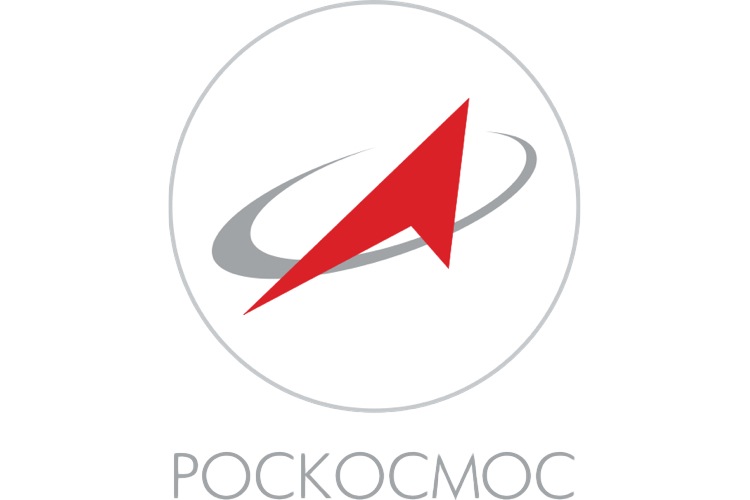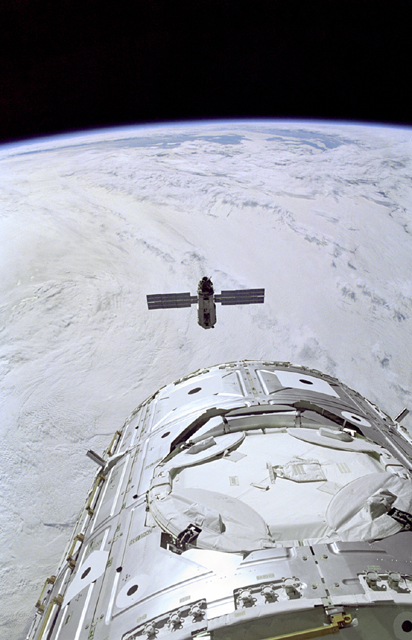Roscosmos: Russia's Space Agency

Roscosmos, also known as the Roscosmos State Corporation for Space Activities, is the coordinating hub for space activities in Russia. It performs numerous civilian activities (including Earth monitoring and the astronaut program) and coordinates with the Defense Ministry of the Russian Federation for military launches.
Roscosmos used to be known as the Russian Federal Space Agency, which was formed in 1992. The new corporation was formed from merging the agency and United Rocket and Space Corporation, a joint-stock entity meant to bolster the space sector. Russia's involvement in space, however, long predates these events. At the height of the former Soviet Union's space prowess in the 1950s and 1960s, the country racked up several world firsts — including the first human in space.
Roscosmos came to be in a different era, shortly after the breakup of the Soviet Union. The agency poured its scant resources into the International Space Station and to this day remains a major participant in the effort. In 2016, it opened a new launch complex called Vostochny that is intended to eventually take over most of the duties of the Baikonur Cosmodrome, its current primary launch facility in Kazakhstan.
The Soviet-U.S. space race
Soviet experience with space threads through much of the past century. Konstantin Tsiolkovsky's pioneering rocketry work extended through the late 19th and early 20th centuries. The Soviets then supplemented that experience with German V2 missile engineers acquired after the end of World War II in 1945. The United States had another group of Germans from the same program.
Under the auspices of International Geophysical Year in 1957-58, the Soviets launched the world's first satellite (Sputnik) on Oct. 4, 1957. Some in the United States worried about the influence of communism in outer space. As Americans scrambled to catch up, the Soviets accomplished many world firsts. Among them were the first man in space (Yuri Gagarin), first woman (Valentina Tereshkova), first lunar flyby (Luna 1) and first three-person crew (Voskhod 1).
The Soviets, however, also had their share of disasters. On Oct. 24, 1960, an R-16 missile detonated at Baikonur and killed an estimated 150 people; the details weren't known by the public, or even the affected families, for many decades. The missions of Soyuz 1 (1967) and Soyuz 11 (1971) both launched from Baikonur and ended with disaster upon landing, which between the two missions killed four astronauts. Another famous example of disaster was the N-1 rocket explosion that detonated on the launch pad on July 3, 1969. While there were no fatalities, it damaged the launch facilities and derailed Soviet plans to send astronauts to the moon.
Subsequently, the Soviets focused on space station technology, most notably in the form of the Salyut and the Mir space station programs. Mir hosted the longest human spaceflight to date: Valeri Polyakov, in 1994. The Soviet expertise in long-duration spaceflight impressed NASA, which decided to partner with the Russians after the Soviet Union fell apart in the early 1990s.
International Space Station contributions
Collaboration with NASA dates back to the 1970s, with the Apollo-Soyuz Test Project of 1975, which saw a Russian Soyuz spacecraft and an American Apollo spacecraft meet in Earth orbit. The astronauts and cosmonauts worked together in space briefly before heading off for their own separate missions.
After the Soviet Union broke apart in 1991, funds reportedly ran thin for the Russian space program. A year later, Roscosmos was formed to coordinate space activities for Russia. The United States was concerned that the fall of the Soviet Union might cause economic havoc in that area of the world. So, NASA offered paid astronaut flights to the Mir space station, with its astronauts receiving technical and language training in Russia before flights. The Shuttle-Mir program (as it was called) flew several American astronauts to Mir between 1995 and 1998. It also laid the groundwork for the International Space Station collaboration; Russian officials eventually elected to focus their resources on the ISS and de-orbit the aging Mir.

Russia was a part of ISS construction from the beginning. In 1998, the Zarya control module was the first element launched. Some (but not all) of Roscosmos's contributions include the Zvezda service module, a docking hatch, the research module Rassvet, and regular cargo flights to the ISS using Progress spacecraft. Across dozens of flights, Progress has experienced only a handful of failures over the space station's lifetime (in 2011, 2015 and 2016).
Baikonur and Vostochny
As of early 2018, all astronauts leaving for the ISS leave from Baikonur. This situation has persisted since 2011, when NASA retired the aging space shuttle. At the time, the agency expected to restart flights on U.S. soil in 2015, when the Commercial Crew Program's spacecraft were ready. However, funding and development delays now have test flights expected to start no earlier than 2018.
NASA currently buys seats on Russian spacecraft for its astronauts, a practice that was projected to climb to $82 million per person by 2018. For Russia, contributing cargo launches and launch hardware — not to mention other Russian modules on station — allows the country to send numerous cosmonauts into space. Many three-person Soyuz crews that head to the station for long-term stays have multiple Russians on board.
In 2011, Russia started construction on another launch site — Vostochny — which is in Siberia and close to the Chinese border. The long-term aim is to shift most Russian launches to Vostochny, which unlike Baikonur, is on Russian soil. (Baikonur used to be inside the Soviet Union, but Kazakhstan since declared independence and the Russians lease the facility.) While Russia initially planned to have crewed launches start at Vostochny in 2018, there have been few launches at the facility to date. Three satellites were successfully launched in 2016, but after Vostochny's second launch in late 2017, a $45 million satellite was lost.
Robotic space missions
Roscosmos is a major provider of launch services to other countries. Its Proton rocket line has had a few snags over the years. Three Breeze-M upper stages failed in separate launches across 16 months, prompting a full review in late 2012. Then in 2013, another booster failed 17 seconds after the launch. Satellites were also lost in failure in 2015 and 2015.
In addition to launching satellites for other countries, Roscosmos does numerous satellite missions of its own. Some examples include Earth observation, military satellites, telecommunications, and Glosnass navigation satellites.
In 2013, a fragment of a Chinese satellite (Fengyun 1C) reportedly collided with a small Russian laser-ranging satellite called BLITS (Ball Lens in The Space). The crash knocked BLITS from its original orbit and broke it into at least two fragments.
Russia is now looking ahead to a major Mars mission, ExoMars, which it is doing with the European Space Agency. ExoMars' first leg (the Trace Gas Orbiter) launched successfully in 2016, while a rover was delayed by two years (due to scheduling problems) until an expected launch in 2020. Roscosmos is hoping the mission will break the streak of several failed Mars missions, most recently the Phobos-Grunt failure that occurred in 2012 when the probe could not break free of Earth's orbit.
Media reports have said that Russia is interested in developing a series of robotic moon missions, which would be dubbed Luna-Glob. However, budgetary restraints have reportedly pushed back the first of these missions until at least 2025.
Join our Space Forums to keep talking space on the latest missions, night sky and more! And if you have a news tip, correction or comment, let us know at: community@space.com.
Get the Space.com Newsletter
Breaking space news, the latest updates on rocket launches, skywatching events and more!

Elizabeth Howell (she/her), Ph.D., was a staff writer in the spaceflight channel between 2022 and 2024 specializing in Canadian space news. She was contributing writer for Space.com for 10 years from 2012 to 2024. Elizabeth's reporting includes multiple exclusives with the White House, leading world coverage about a lost-and-found space tomato on the International Space Station, witnessing five human spaceflight launches on two continents, flying parabolic, working inside a spacesuit, and participating in a simulated Mars mission. Her latest book, "Why Am I Taller?" (ECW Press, 2022) is co-written with astronaut Dave Williams.










